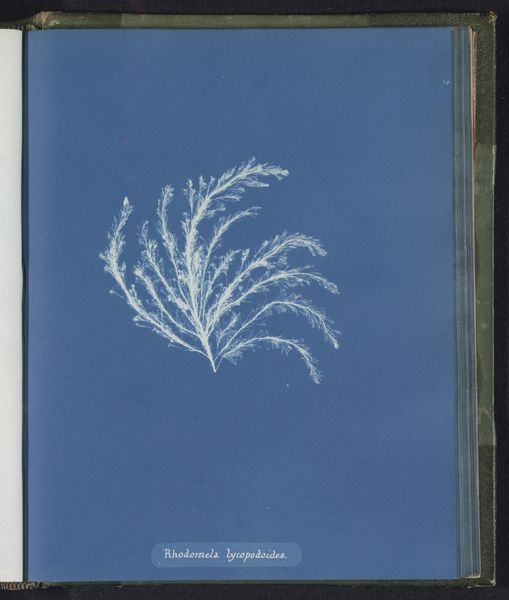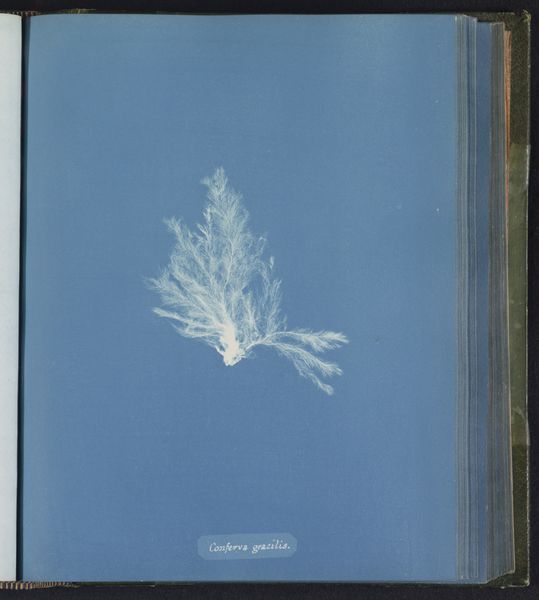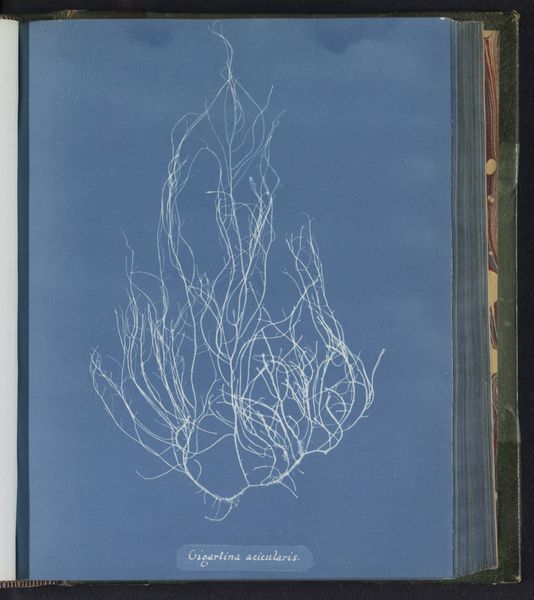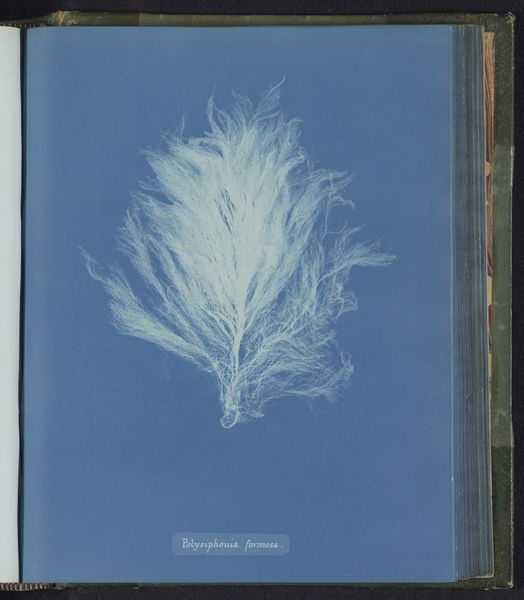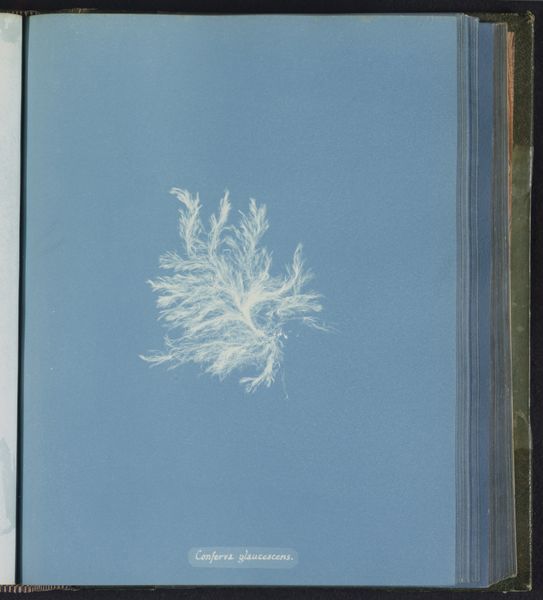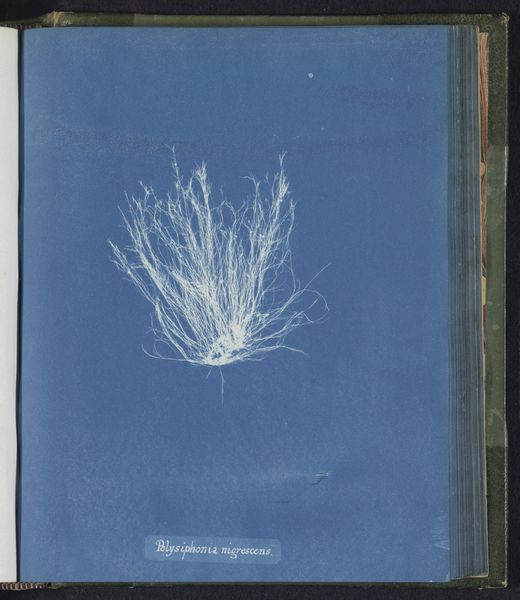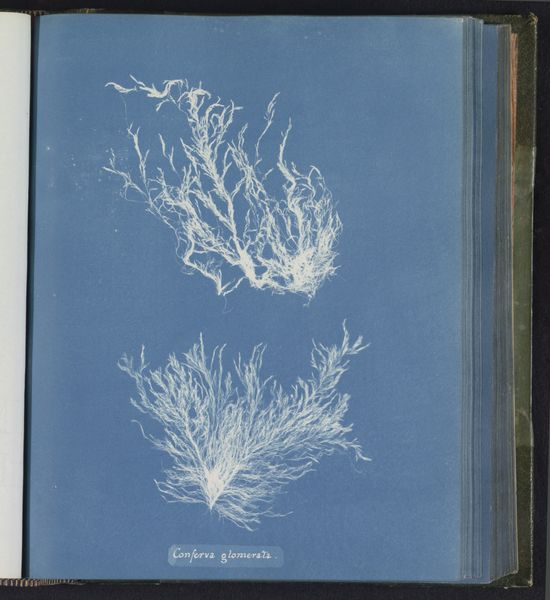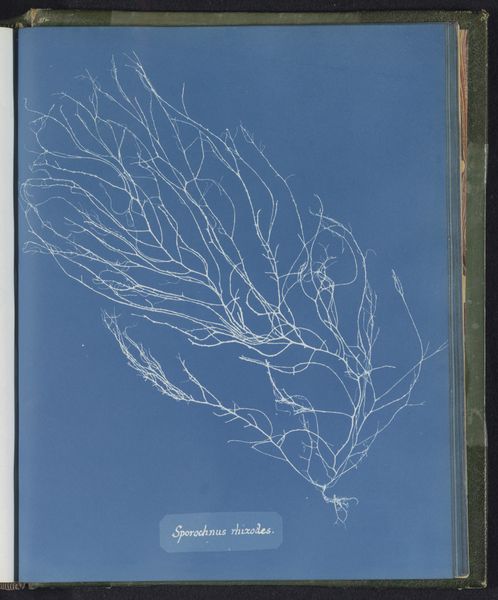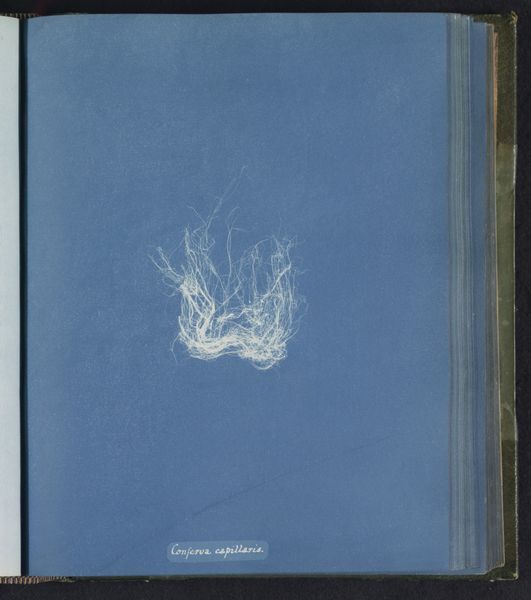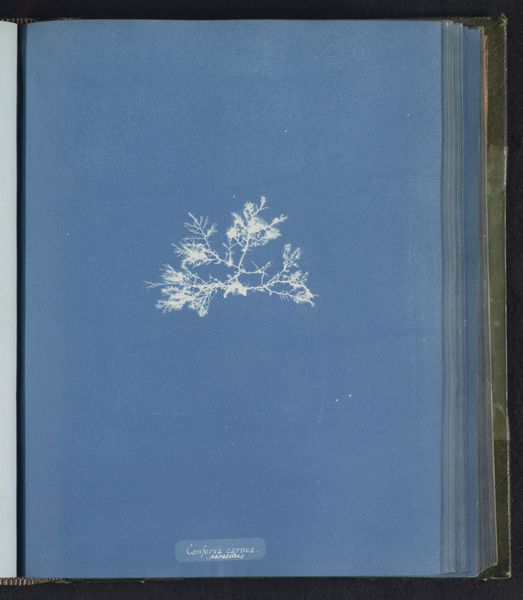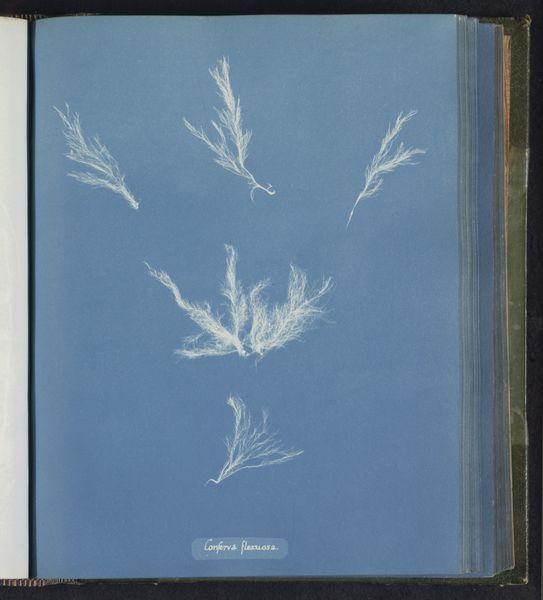
print, cyanotype, photography
# print
#
cyanotype
#
photography
#
realism
Dimensions: height 250 mm, width 200 mm
Copyright: Rijks Museum: Open Domain
Curator: What a wonderfully ethereal image. This is a cyanotype, a type of early photographic print, by Anna Atkins, created sometime between 1843 and 1853. It depicts a marine algae called Myrionema strangulans, which she notes is parasitic. Editor: Wow, that blue is arresting. It feels so delicate, like holding a moonbeam in your hand. It almost doesn't feel real. The details of the algae are so faint, it looks like an apparition. Curator: Atkins was a botanist and photographer, and she created these cyanotypes to illustrate her books on British algae, essentially making them scientific documents. These works hold a special place in history, they are sometimes considered to be among the first books to be illustrated with photographic images. It really blurs the line between art and science, doesn't it? Editor: Absolutely. Knowing it was intended as a scientific illustration makes me see it differently. The intense blue feels less dreamlike now and more like the sterile precision of a lab environment, but the inherent artistry of the process softens it. Even if intended as pure documentation, this cyanotype feels more expressive to me, the artistic choices make it something poetic. Curator: And it's worth considering the politics of representation, as well. Who gets to name, classify, and therefore, possess knowledge? Atkins' work challenged the male-dominated world of science and publishing, and provided access to scientific imagery more publicly. Her photograms democratized knowledge of this field by creating and controlling image dissemination using photographic prints. Editor: You’re so right, the historical implications really resonate. Beyond its beauty, there's this subtle defiance in capturing something so small and ephemeral and immortalizing it in this striking way. This almost feels like an artifact pulled out of a vivid dream or an ocean long gone. Curator: Precisely. Seeing it in the context of scientific communication in the mid-19th century gives it greater significance, I think, more than just simply a blue image of seaweed. It makes one wonder about what we still have to learn from women working in scientific spaces. Editor: Well, whatever its primary purpose, the artistry and the skill of Anna Atkins shine. I find it rather remarkable that something created as a document can still inspire wonder and beauty like this piece, and really make me feel the strangeness and mystery of the natural world.
Comments
No comments
Be the first to comment and join the conversation on the ultimate creative platform.
